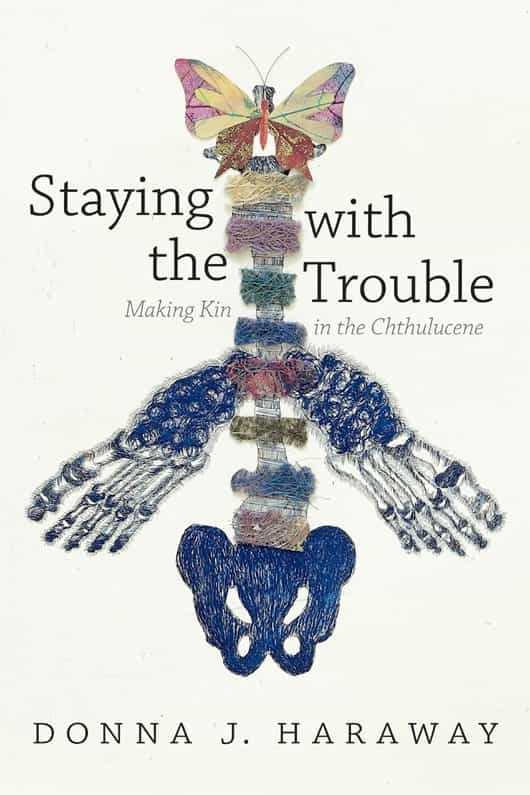Drawing from the Greek roots khthon (earth) and kainos (time), Haraway coins Chthulucene ( not of Lovecraft origins) as an alternative to the monikers Anthropocene or Capitalocene as labels for these turbulent times.
The Anthropocene marks severe discontinuities; what comes after will not be like what came before. I think our job is to make the Anthropocene as short/thin as possible and to cultivate with each other in every way imaginable epochs to come that can replenish refuge.
She proposes a radically different worldview, once that is weird and messy and achievable in the face of current devastations. (Haraway uses the acronym SF throughout her book and traces its possible meanings: “science fiction, speculative fabulation, string figures, speculative feminism, science fact, so far…”)
She references, among others, Ursula K. Le Guin (The Author of the Acacia Seeds) and Octavia Butler (Parable of the Sower) for their visionary exploration of narrative and biological sympoiesis. Whatever the future holds, the human and nonhuman are inextricably linked in what she calls tentacular practices, and will require sym-poiesis rather than auto-poiesis, making-with instead of self-making.
Hehe, we get a bonus review from Alexis Hall in the footnotes to Chasing the Light:
This is quite the most Adam book. It’s exceptionally weird yet oddly hopeful, extremely academic and yet endlessly imaginative. Essentially it’s a book about living with the mess we’ve made of our world.
“Staying with the trouble requires learning to be truly present, not as a vanishing pivot between awful or edenic pasts and apocalyptic or salvific futures, but as moral critters entwined in myriad unfinished configurations of place, times, matters, and meanings.”
